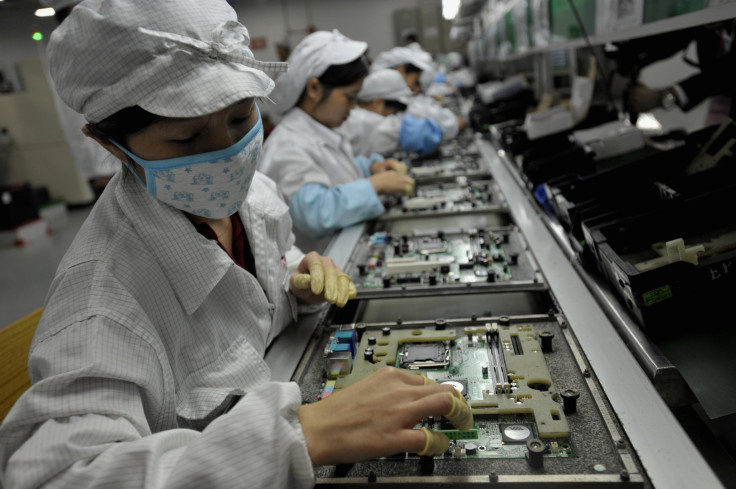Worker In Foxconn Factory, Where iPhone X Is Also Built, Kills Himself

A China workers’ rights organization, based out of the United States, alleged a worker at a Foxconn factory that manufactures iPhones in the Asian country died by suicide Saturday.
Li Ming, 31, jumped from a building in Zhengzhou in the east-central Chinese Henan province, according to China Labor Watch (CLW). The organization even posted a video, which reportedly showed Li’s corpse lying on the snow and a crowd gathered around it, the Telegraph reported.
CLW spoke to the deceased’s father, who confirmed his death but gave no information regarding what motivated the worker to take his life. Li was working for Foxconn for the past two months and lived in one of the dormitories provided by the company. It was not immediately known whether Li himself was involved in manufacturing iPhones.
The factory, where Li worked, manufactured Apple’s iPhone X — the latest model in its series, which was launched in December 2017. Apparently, almost 50 percent of Apple’s iPhones were manufactured in the factories in Zhengzhou. A reported 350,000 workers work on production lines in the city to make 350 units per minute.
Foxconn factories in China have a long, controversial history of worker suicides in the past. In July 2009, a Foxconn communications department worker named Sun Danyong, 25, died by suicide. He jumped from his apartment building after he was beaten up by factory guards for allegedly losing an iPhone prototype.
In 2010, 14 employees working for Foxconn died by suicide, most of them by jumping off buildings. After being embroiled in accusations of running their factories like a “sweatshop,” Foxconn erected nets around its Shenzhen factory buildings, designed to prevent suicide jumps in 2011. Although the rate of worker suicides went down, four workers still ended up taking their lives since then.
In the beginning of the following year, a group of 150 workers in a Foxconn factory in Wuhan, in Hubei province, China, protested against working conditions by standing on the roof of a factory building and threatening to commit suicide. As it turned out, 600 of the factory’s workers were being relocated to a place with horrible living conditions.
"The assembly line ran very fast and after just one morning we all had blisters and the skin on our hand was black,” one of the factory workers told the Telegraph on the condition of anonymity. “The factory was also really choked with dust and no one could bear it.”
Former Apple CEO Steve Jobs had shown concern over the continuous cases of worker suicides being reported in Foxconn factories.
“We are on top of this… Foxconn is not a sweatshop. It's a factory – but my gosh, they have restaurants and movie theatres... but it's a factory. But they've had some suicides and attempted suicides – and they have 400,000 people there. The rate is under what the US rate is, but it's still troubling."
A month before iPhone X was set to hit the market in 2017, reports of teenagers working 11 hours a day to assemble the units came out. Six high school students, ranging from ages 17 to 19, said they worked extensively long hours at a Foxconn factory in Zhengzhou, China, something that is illegal in the country.
They were reportedly told by their school “work experience” of three months at the factory was mandatory for their graduation.
“We are being forced by our school to work here,” an 18-year-old student who assembled up to 1,200 iPhone X cameras per day. “The work has nothing to do with our studies.”
© Copyright IBTimes 2024. All rights reserved.





















